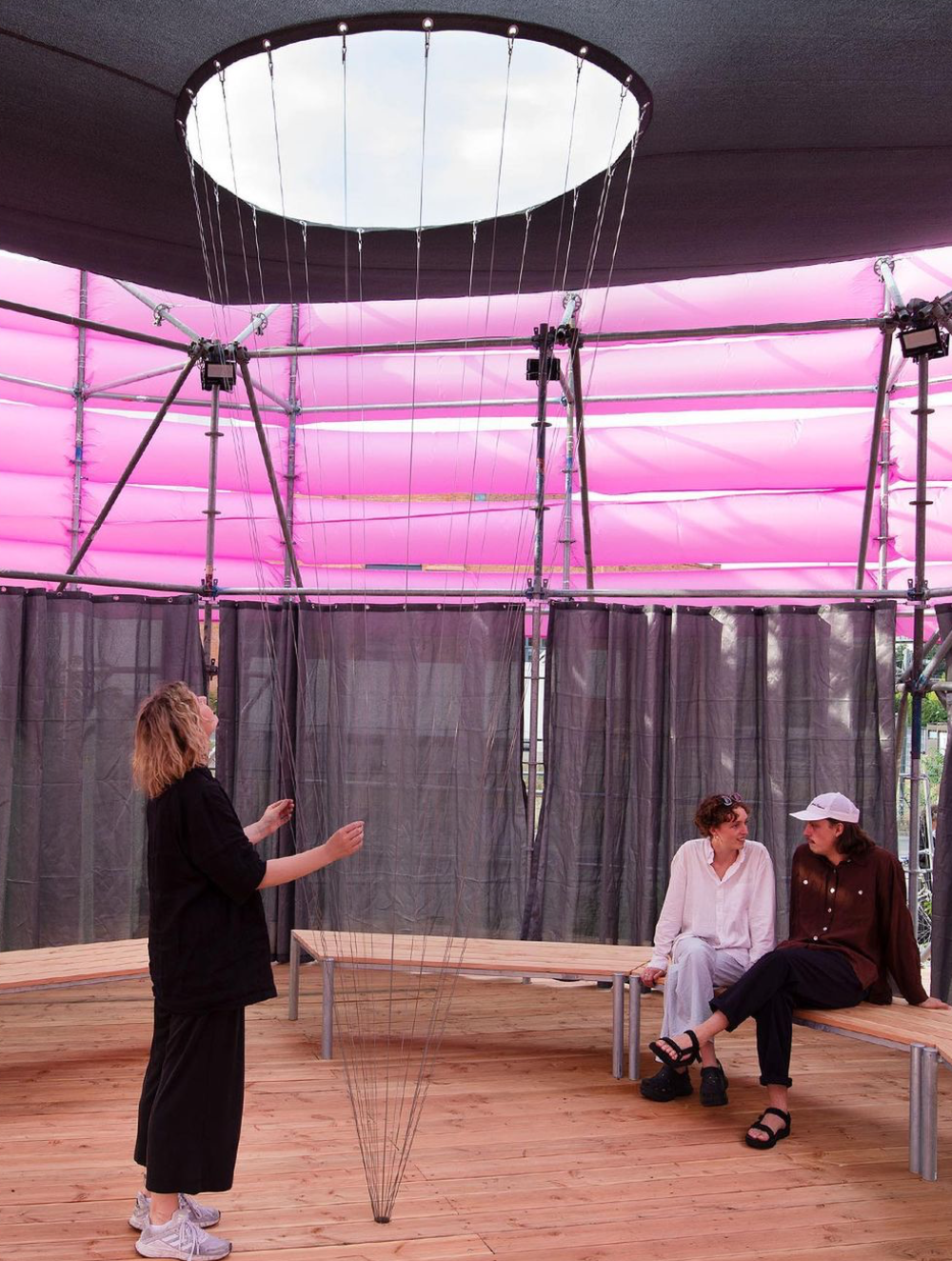ACTIVATING URBAN WASTELANDS
Sommerpavillion an der Spree
With the Summer Pavilion, a wasteland in Berlin's government district was activated and transformed into a temporary place of dialogue and recreation for the city's residents and actors from the cultural and creative industries. To revitalise the abandoned, sandy terrain, a garden with native species was created.
The pavilion provides a well-shaded, recreational and discursive space. Its textile facade is inflated using energy from a mobile solar device as a low material and energy-saving solution while crea- ting a temporary landmark within its surroundings. Its presence is drawing attention and interest from both locals and visitors - an unexpected object in the government district. The pavilion and terrace serve as a venue for networking events and relaxation. Its design and setup can accommo- date social gatherings, conferences, workshops, and other activities that facilitate interactions and connections among visitors. The interplay of curtains in an Agora setting contributes to the adaptation to different situations and event requirements.
“Our intervention aims to stimulate the reactivation of our urban spaces and to strengthen a green infrastructure that contributes to a resilient and biodiverse city".
Native plants are adapted to the environment and provide habitat and food for local wildlife, including birds, insects and small mammals.With the summer pavilion, we have activated a piece of fallow land in the city center of Berlin and transformed it into an ephemeral place for exchange and recreation for citizens and actors from the cultural and creative industry. For its revitalization, a wild garden using local species has been planted to cultivate the deserted, sandy terrain. Our intervention promotes the appropriation of urban terrains and encourages green infrastructure that contributes to a resilient and biodiverse city. Native plants are well-adapted to the environment and provide habitat for local wildlife, including birds and bees.
A project for u-institute, Kompetenzzentrum Kultur- und Kreativwirtschaft des Bundes
Architecture by Popticum, ARGE:3000 and Kristin Lazarova
Landscapearchitecture by Johanna Bendlin, Laura Villeret and nettlesandpoppies
Lorenz Kuschnig Lefort, Maxie Schneider
With: Lasse Skafte
Images: Jens Franke, WILLIAM VEDER, Popticum

image: Jens Franke

image: WILLIAM VEDER
image: Jens Franke

image: WILLIAM VEDER

image: Jens Franke

image: WILLIAM VEDER


